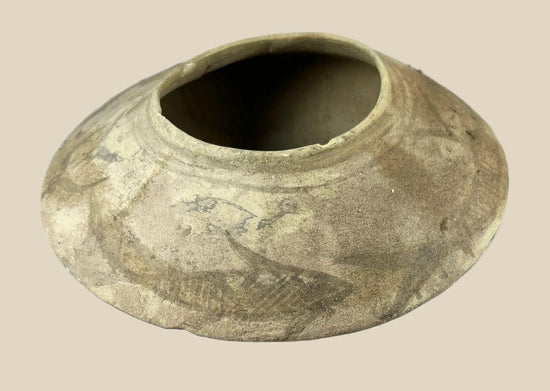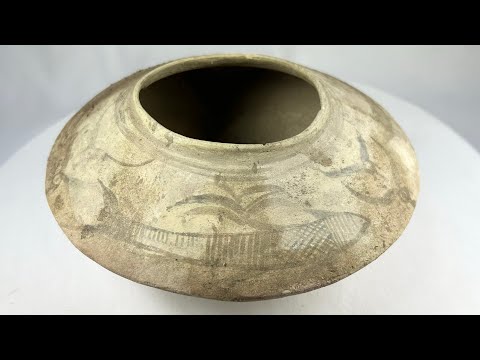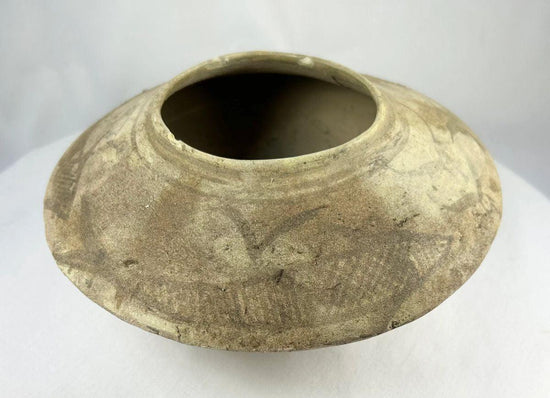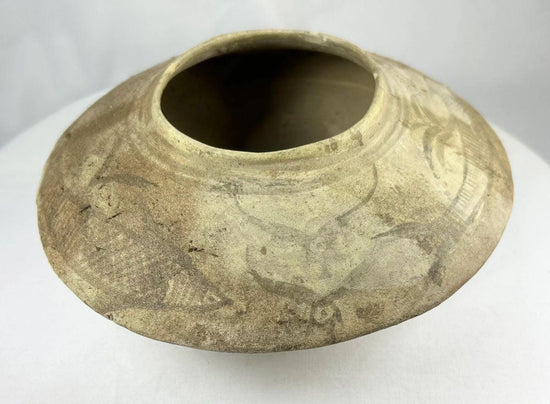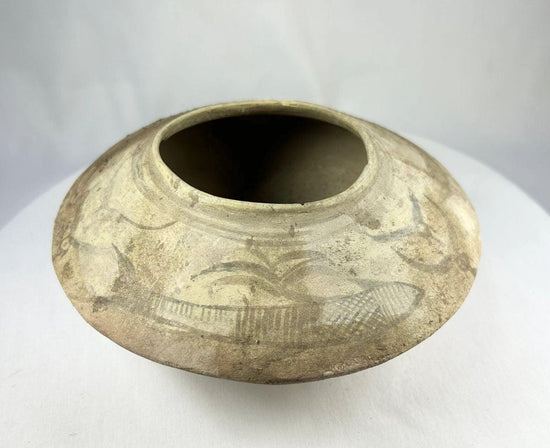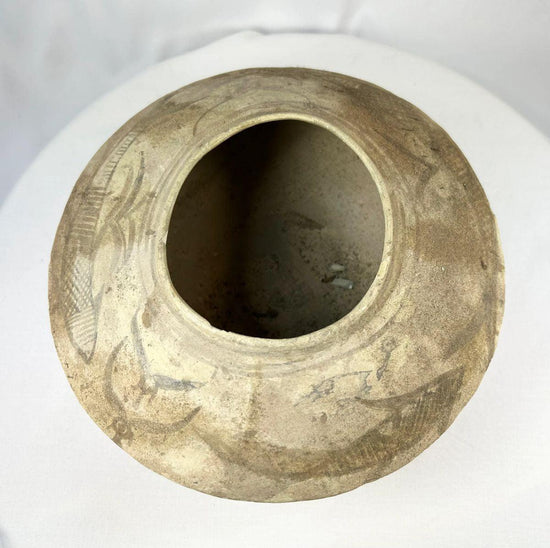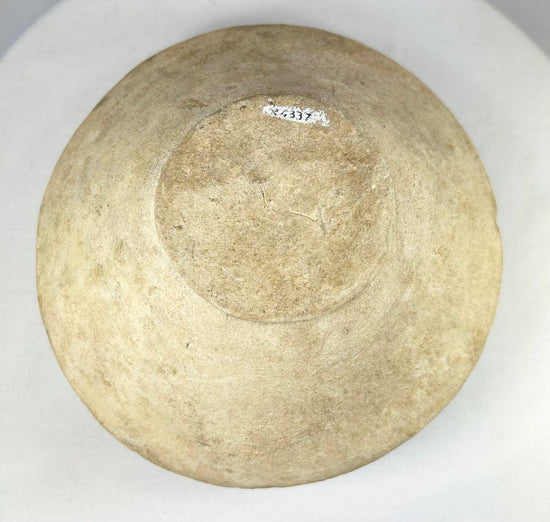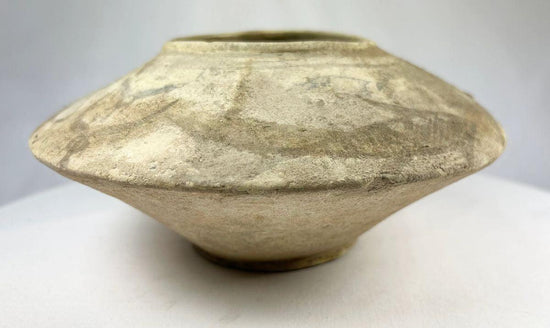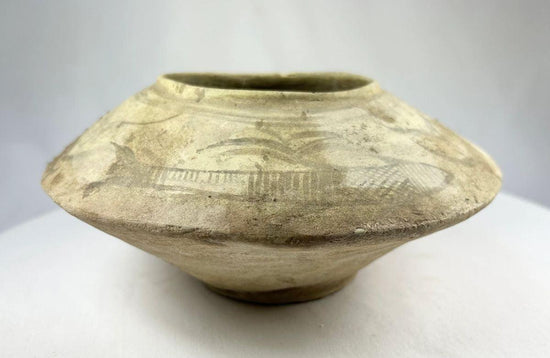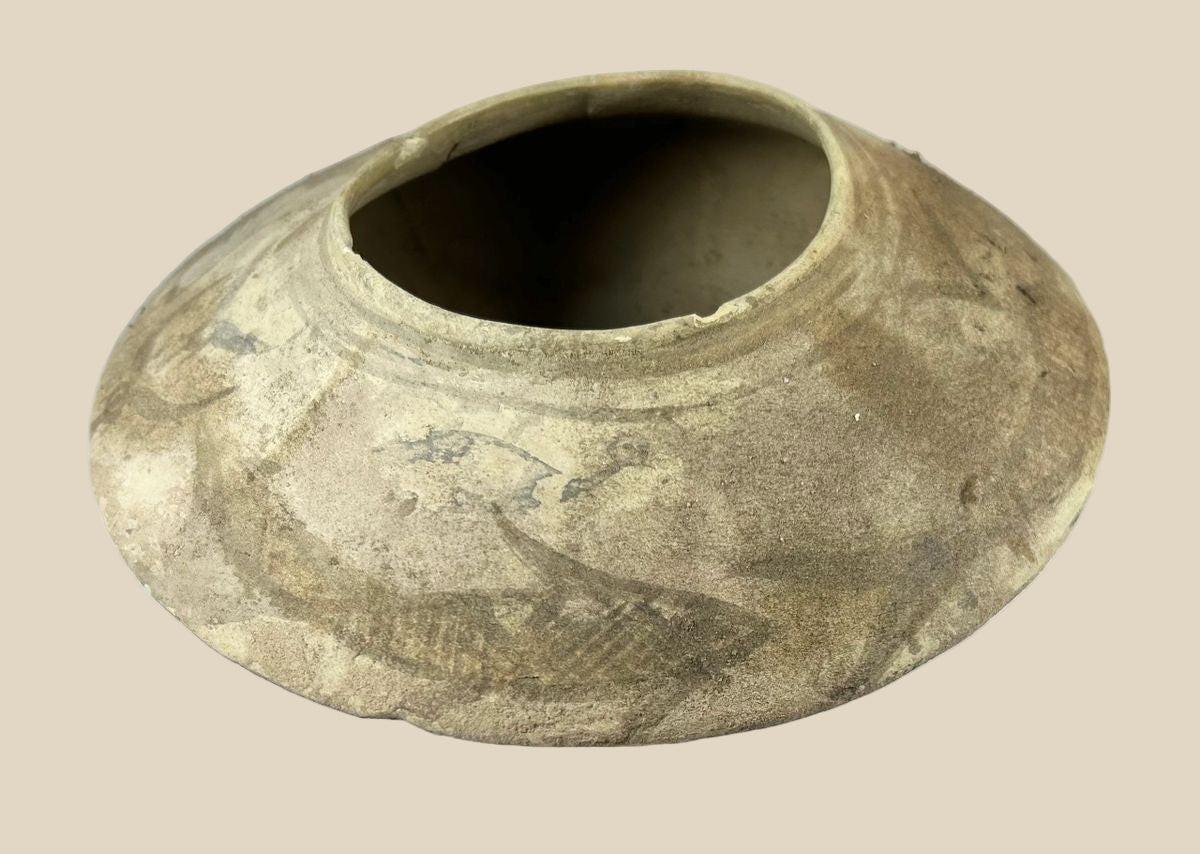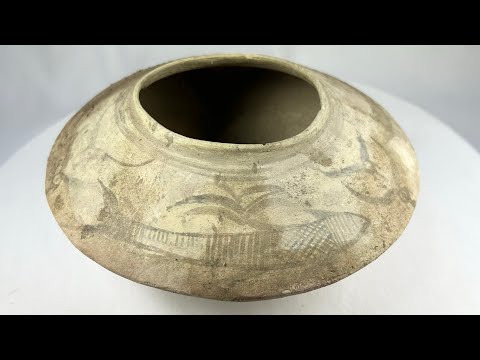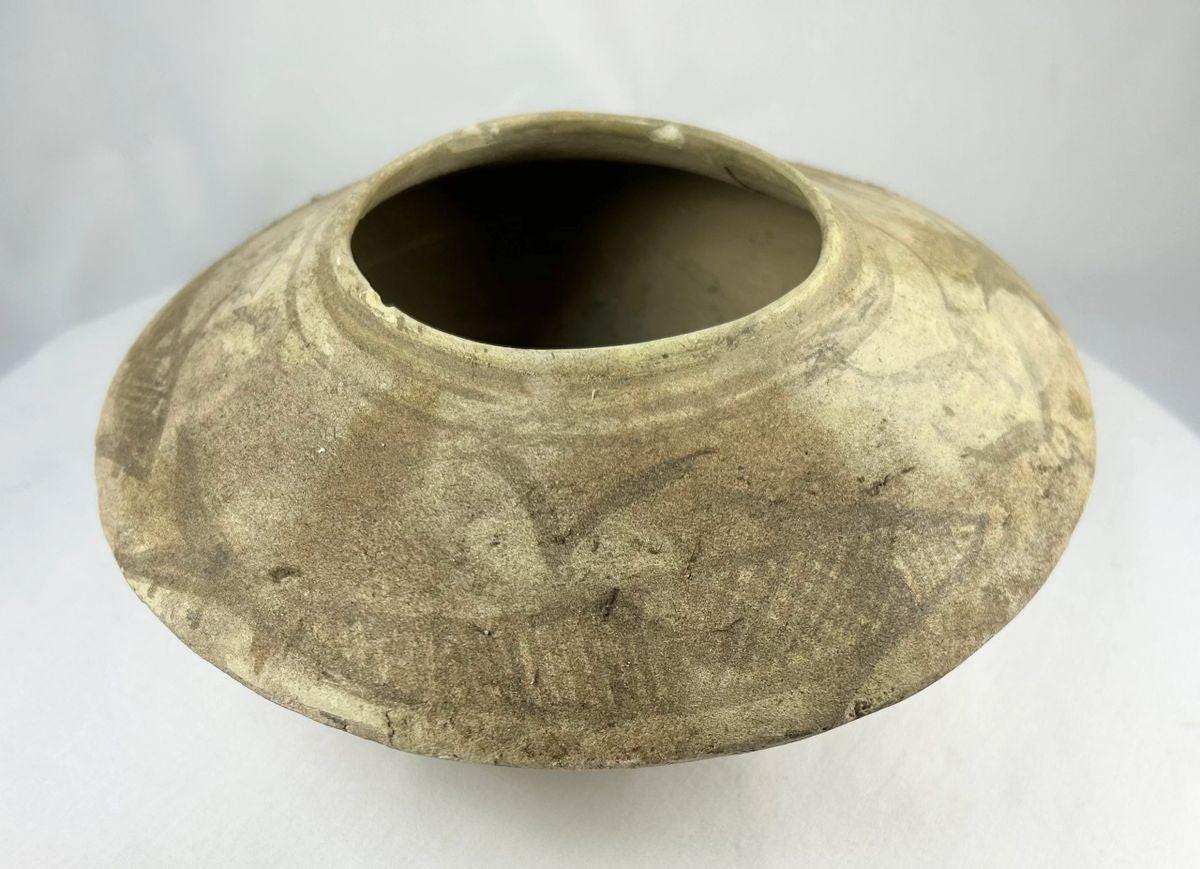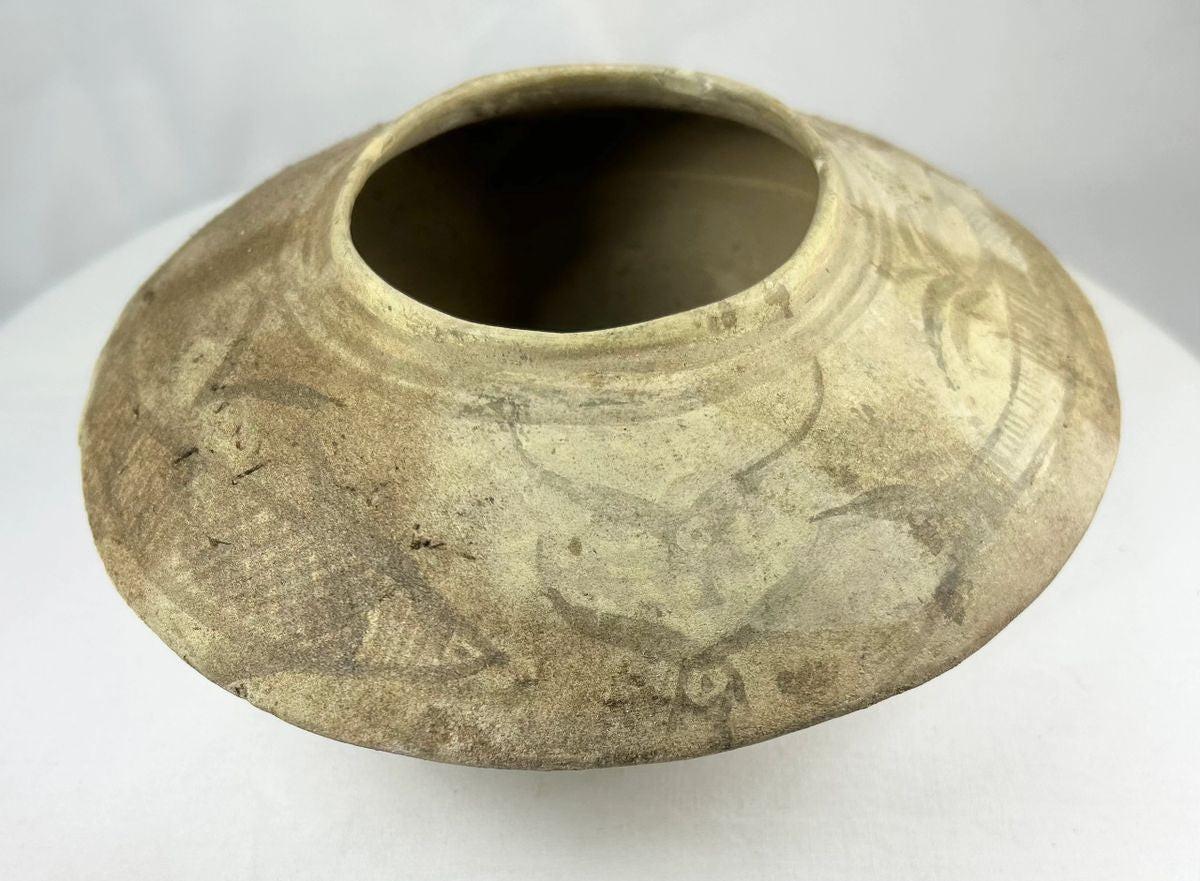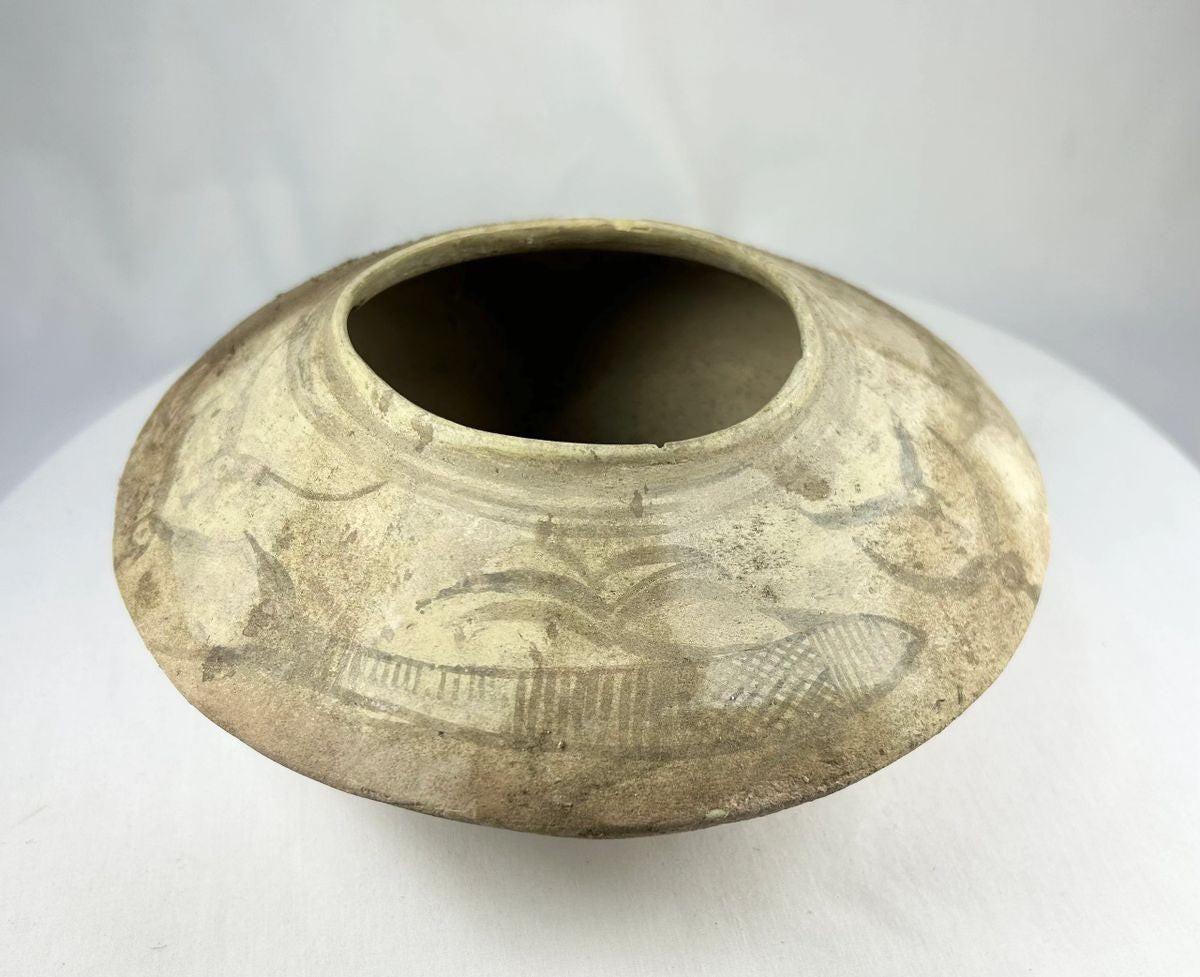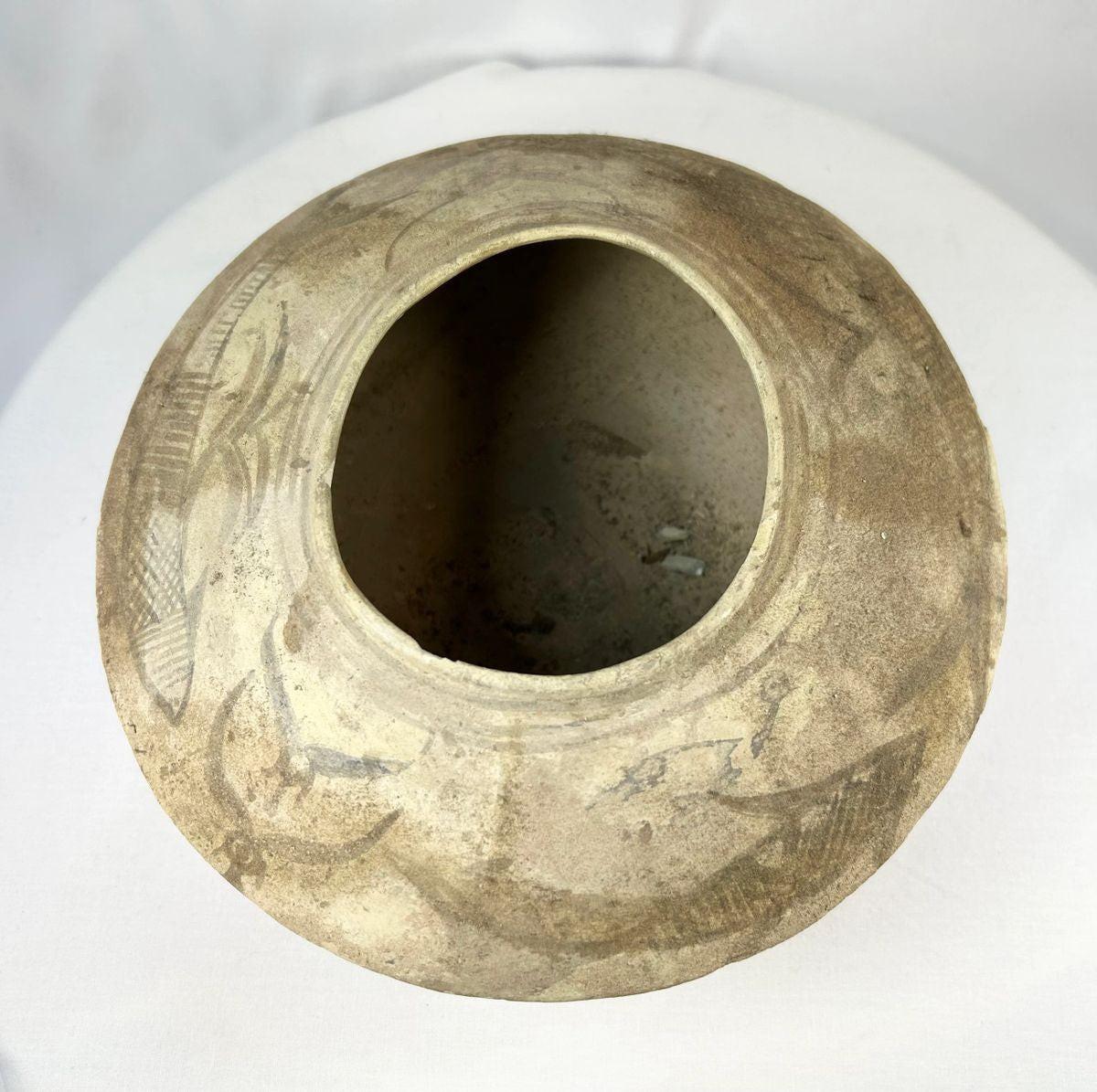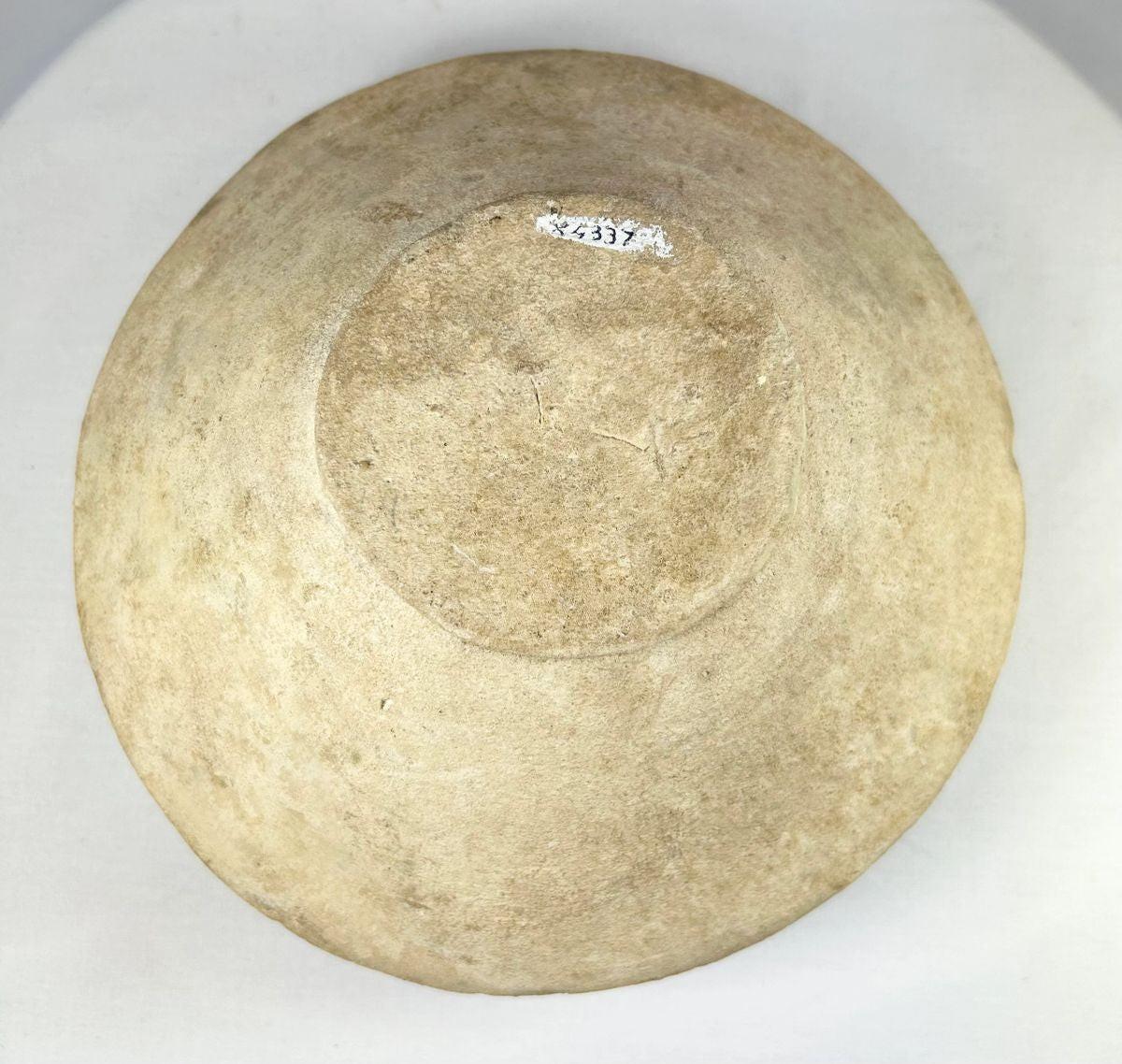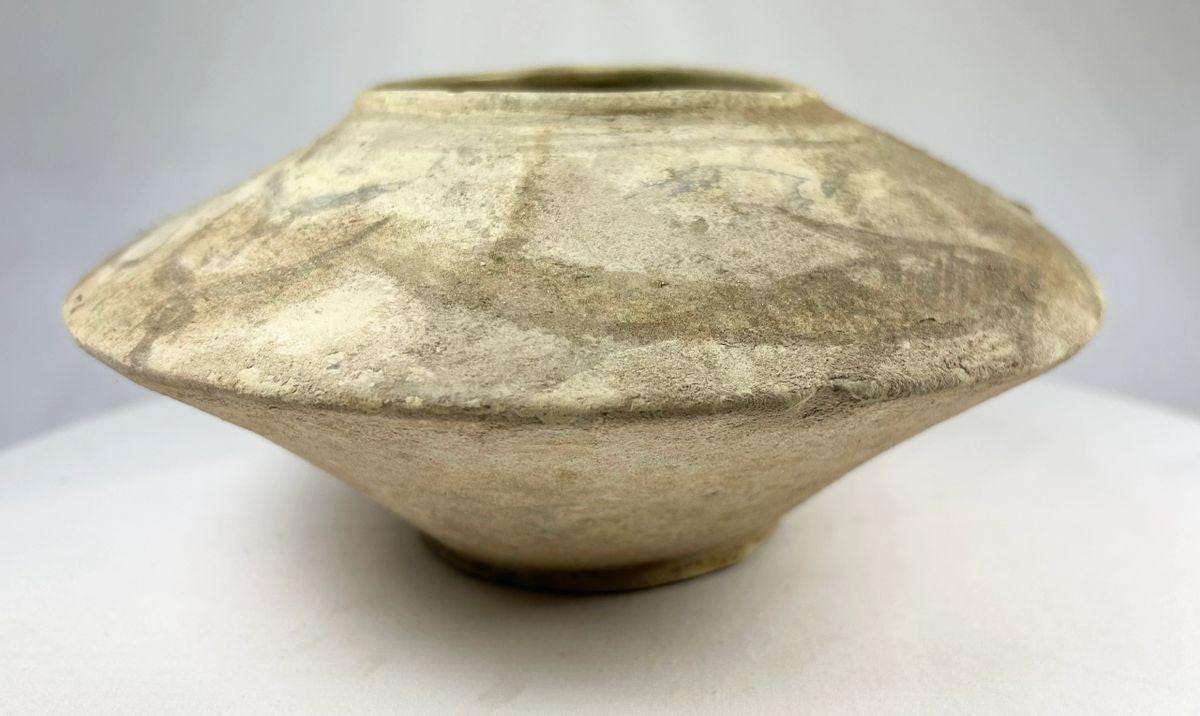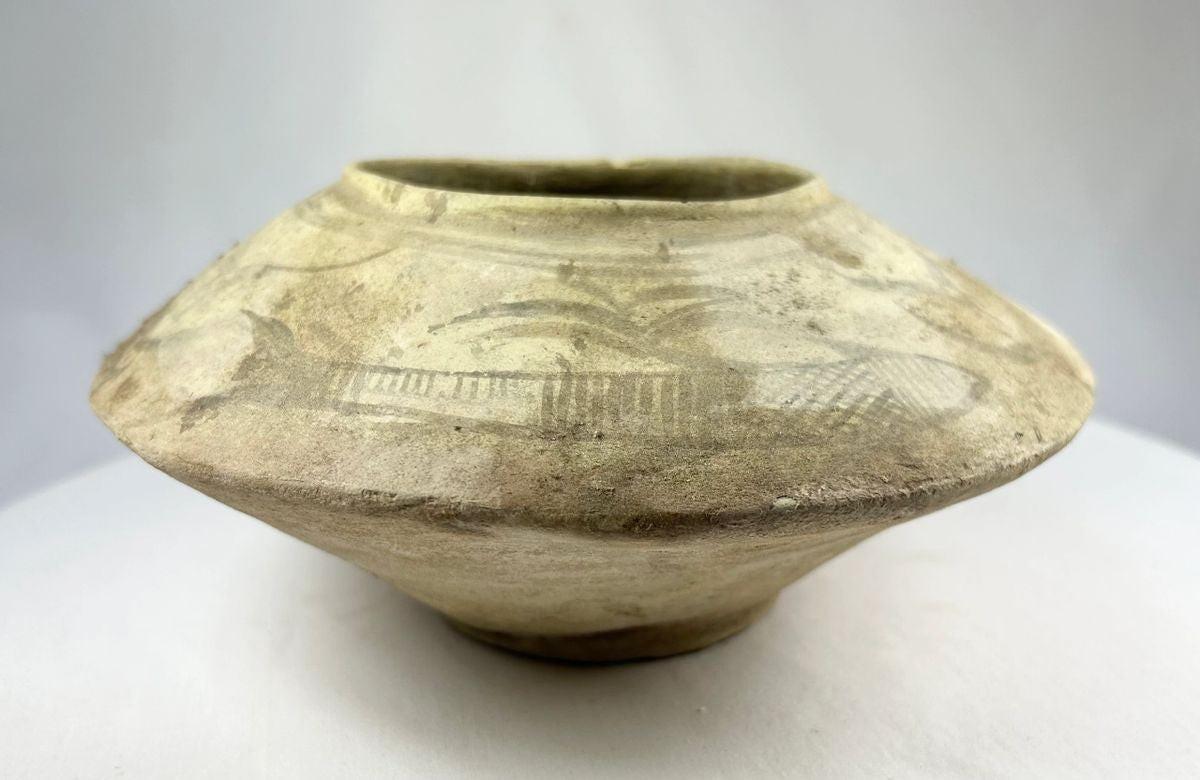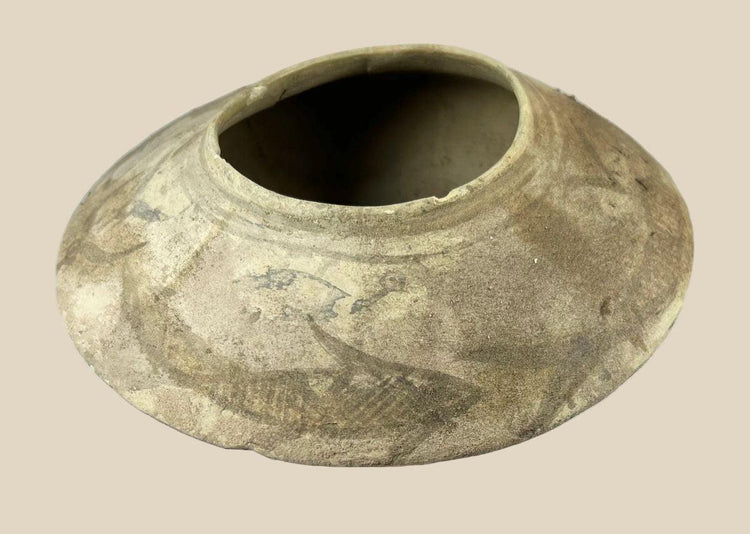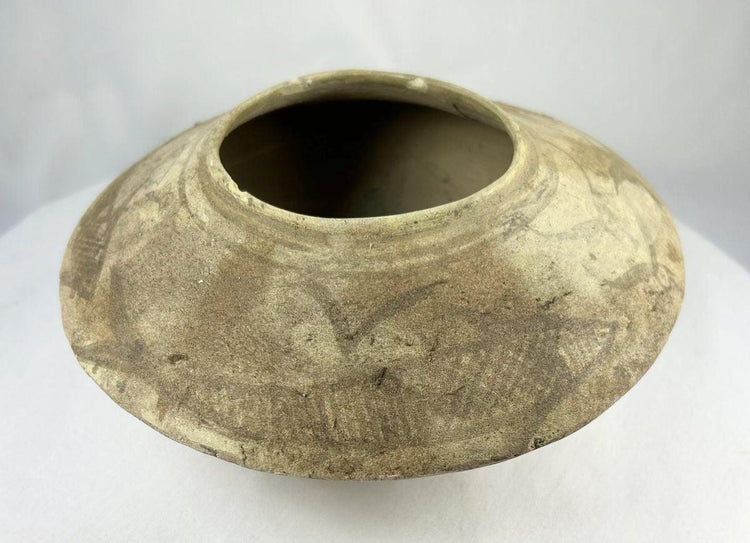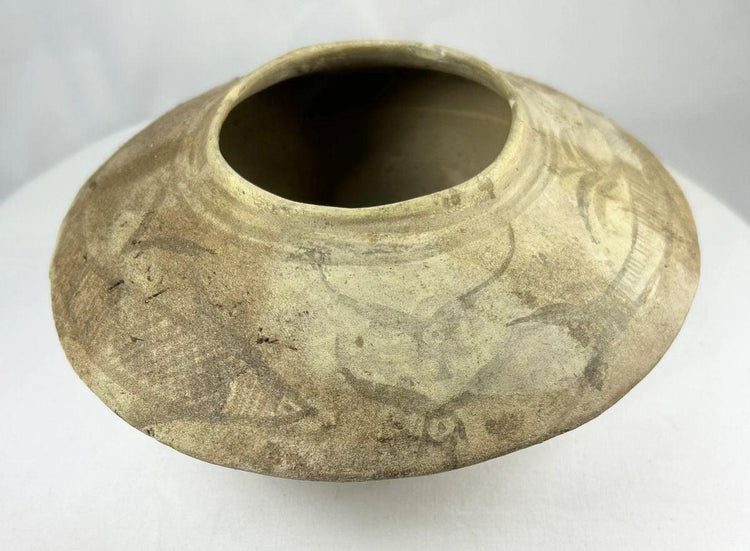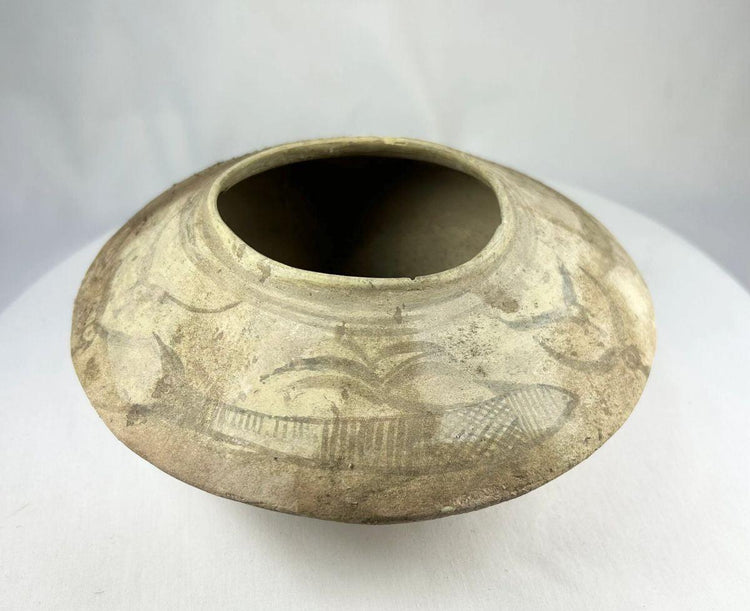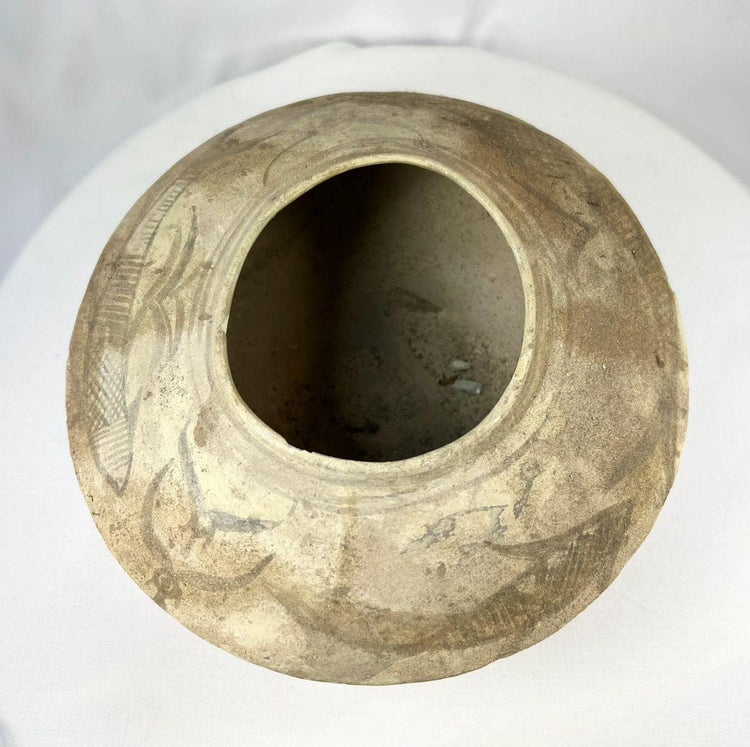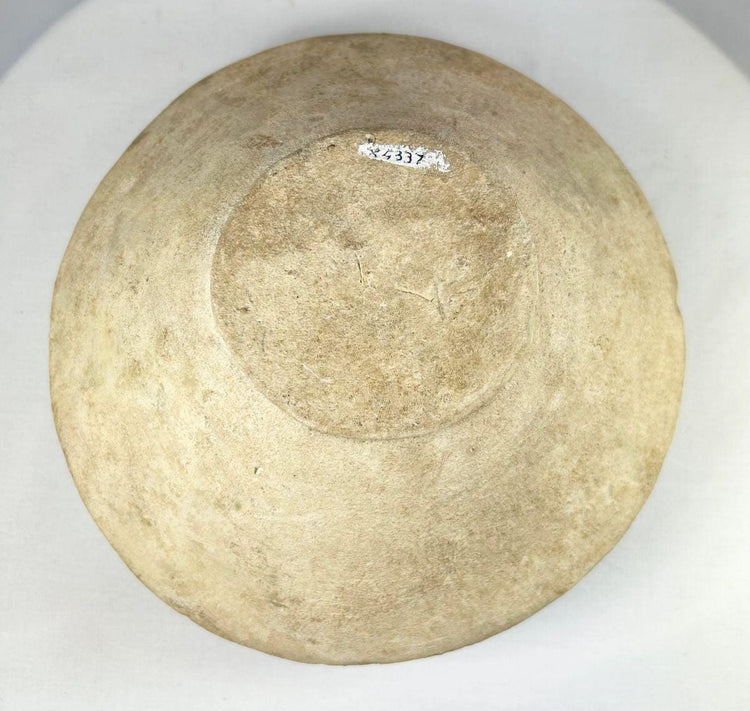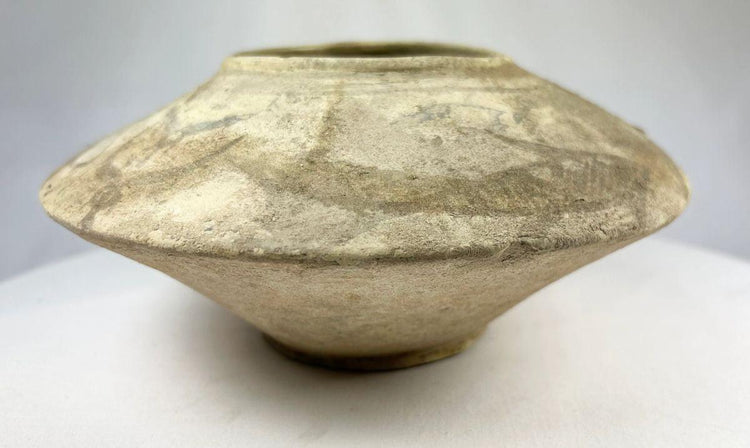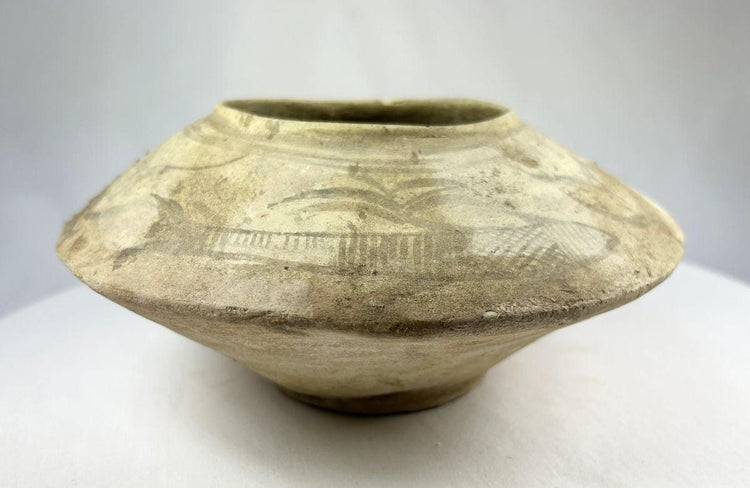Indus Valley | Painted Terracotta Bowl with Fish Motifs | 2nd Millennium BCE
Description
More
Less
Historical Context & Origin
Region: Indus Valley Region (present-day Northwestern India or Pakistan)
Material: Terracotta (low-fired clay)
Period: Late Harappan / Post-Harappan Phase, 2nd Millennium BCE
Description
This ancient ceramic vessel features a flattened globular body with a short, open mouth and gently flared rim. Decorated in a slip-painted style, the surface bears stylized fish motifs and linear geometric bands—designs that are characteristic of late Indus Valley and early Chalcolithic cultures of Northern India. The imagery, especially the fish, reflects ritual symbolism tied to fertility, sustenance, and the spiritual significance of water. With traces of its original excavation inventory label preserved on the base, this vessel stands as an authentic artifact of one of the world’s earliest urban civilizations.
Features
- Slip-painted decoration in black and brown pigments
- Encircling fish motifs with geometric detailing
- Uneven lip, showing evidence of ancient use
- Original excavation label remnants on base
- Unrestored, excavated condition with natural wear
Cultural Significance
Pottery such as this represents both the artistic and utilitarian achievements of the late Harappan culture. The fish motif carried symbolic weight, embodying abundance, water, and cosmic renewal, while also reflecting the agricultural and river-based lifeways of the civilization. These vessels not only served daily or ritual functions but also provide valuable insight into trade, symbolism, and the cultural continuity of early South Asian societies.
Condition
Good excavated condition. Minor rim chipping and surface abrasions consistent with age. No restoration. Stable and display-ready with authentic archaeological patina intact.
Dimensions (approximate)
Height: 9 in
Width: 4.5 in
Age
Circa 1800–1200 BCE
Learn More
Unlock the Secrets of the Indus Valley Civilization
Discover More Remarkable Indus Valley Artifacts in our Collection
Description
Historical Context & Origin
Region: Indus Valley Region (present-day Northwestern India or Pakistan)
Material: Terracotta (low-fired clay)
Period: Late Harappan / Post-Harappan Phase, 2nd Millennium BCE
Description
This ancient ceramic vessel features a flattened globular body with a short, open mouth and gently flared rim. Decorated in a slip-painted style, the surface bears stylized fish motifs and linear geometric bands—designs that are characteristic of late Indus Valley and early Chalcolithic cultures of Northern India. The imagery, especially the fish, reflects ritual symbolism tied to fertility, sustenance, and the spiritual significance of water. With traces of its original excavation inventory label preserved on the base, this vessel stands as an authentic artifact of one of the world’s earliest urban civilizations.
Features
- Slip-painted decoration in black and brown pigments
- Encircling fish motifs with geometric detailing
- Uneven lip, showing evidence of ancient use
- Original excavation label remnants on base
- Unrestored, excavated condition with natural wear
Cultural Significance
Pottery such as this represents both the artistic and utilitarian achievements of the late Harappan culture. The fish motif carried symbolic weight, embodying abundance, water, and cosmic renewal, while also reflecting the agricultural and river-based lifeways of the civilization. These vessels not only served daily or ritual functions but also provide valuable insight into trade, symbolism, and the cultural continuity of early South Asian societies.
Condition
Good excavated condition. Minor rim chipping and surface abrasions consistent with age. No restoration. Stable and display-ready with authentic archaeological patina intact.
Dimensions (approximate)
Height: 9 in
Width: 4.5 in
Age
Circa 1800–1200 BCE
Learn More
Unlock the Secrets of the Indus Valley Civilization
Discover More Remarkable Indus Valley Artifacts in our Collection
You May Also Like




